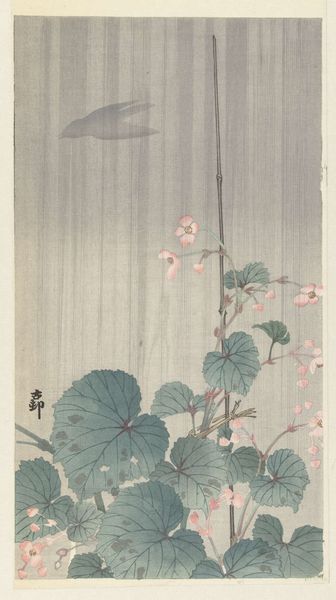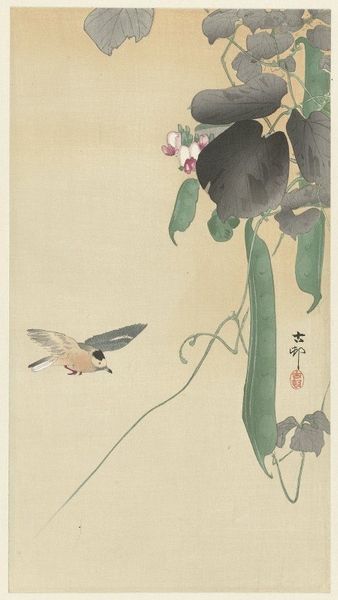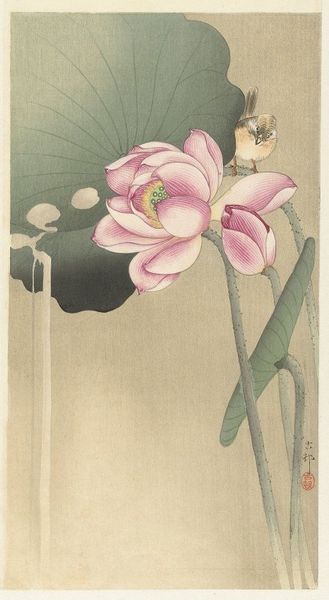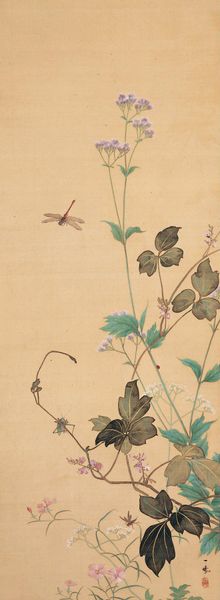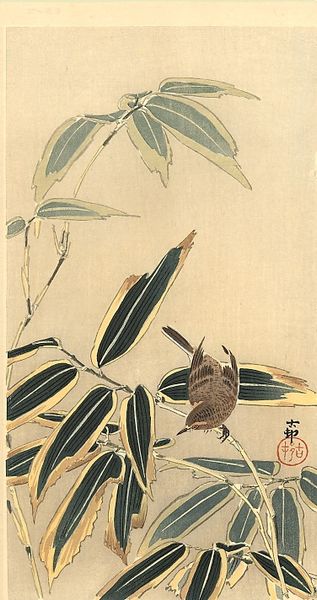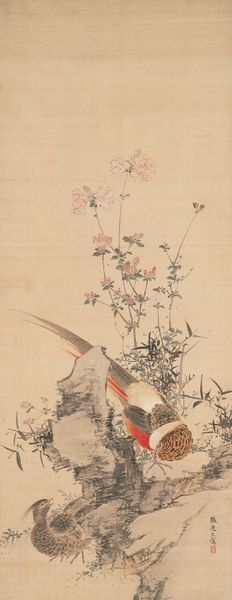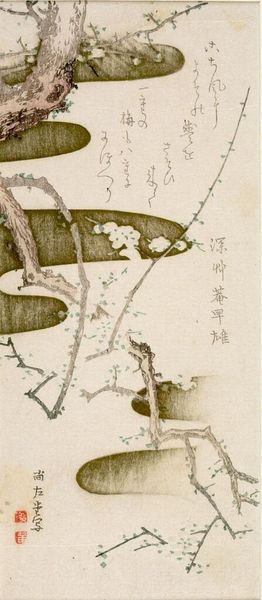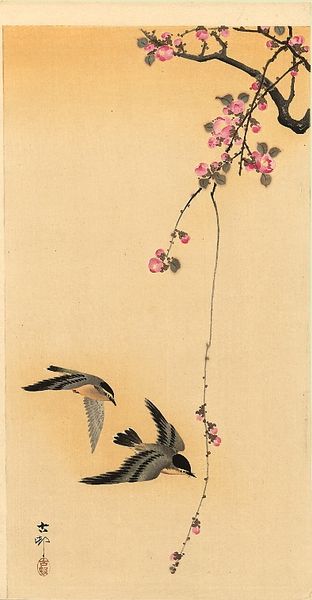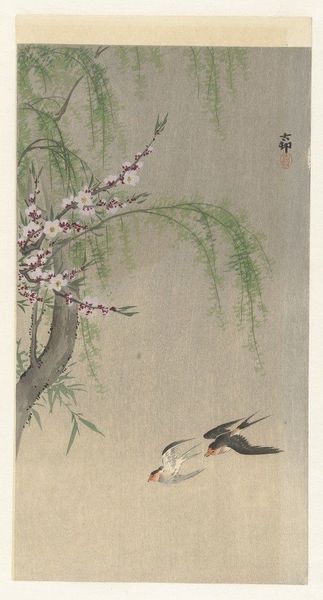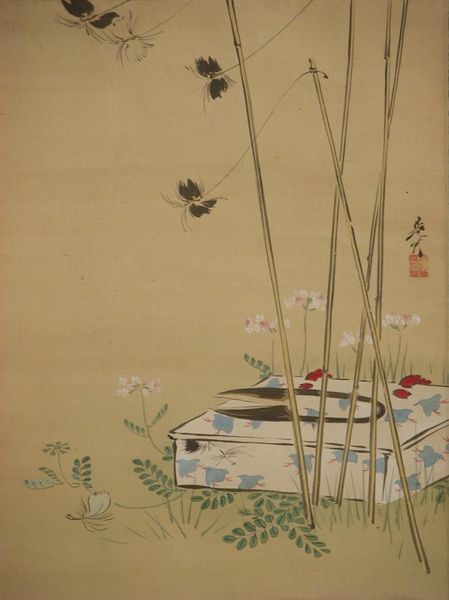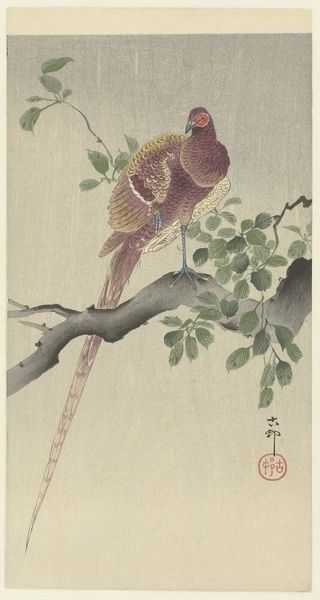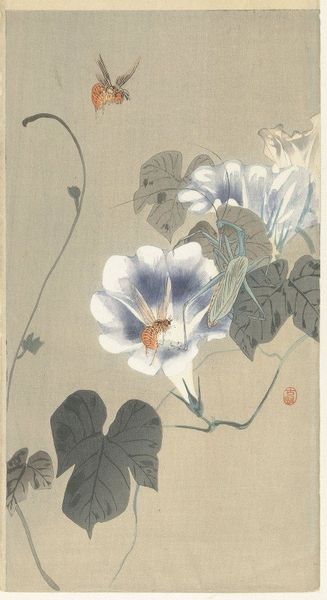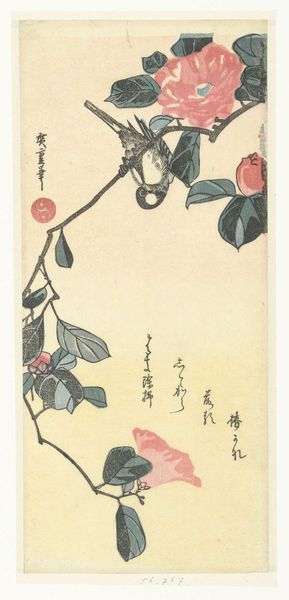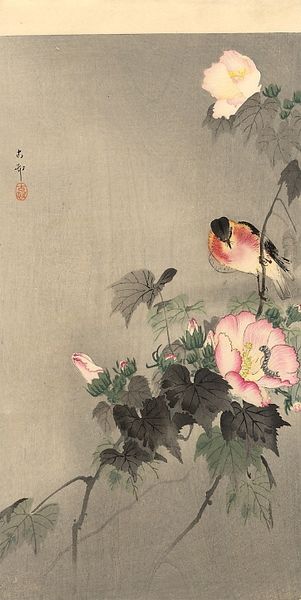
watercolor
#
water colours
#
impressionism
#
asian-art
#
landscape
#
bird
#
flower
#
ukiyo-e
#
leaf
#
watercolor
#
plant
Copyright: Public domain
Editor: So here we have “Bird and Begonias" by Ohara Koson, likely watercolor on paper. It's striking how simple it seems, yet the textures and color variations feel so carefully considered. What stands out to you about this work? Curator: I notice first how the materiality collapses distinctions between “high” and “low” art. Koson employed traditional watercolor techniques, usually associated with craft or illustration, but elevates them to fine art. Consider also the woodblock printing process that, while reproductive, demanded immense skill and labor from artisans. What does the subject matter say about consumption? Editor: Consumption? I'm not sure I follow. It just looks like a pleasant nature scene. Curator: These prints were made for export, catering to Western tastes for “exotic” Japanese art. The bird and flowers, rendered in this particular style, become commodities within a global art market. How does the social context of its production affect how we perceive its aesthetic value? Editor: That's a great point. Knowing it was produced for a specific market changes how I see it. It wasn't just a simple nature scene, but a calculated artwork responding to market demand. Curator: Exactly! By analyzing the means of production and its intended market, we can move beyond simply appreciating its visual appeal. It forces us to think about the exchange of labor, resources, and cultural capital embedded in the piece. Editor: I never would have considered the "commodity" aspect before. I'm going to think a lot differently about art now! Curator: Indeed. It highlights how deeply interconnected art, labor, and consumerism truly are.
Comments
No comments
Be the first to comment and join the conversation on the ultimate creative platform.
